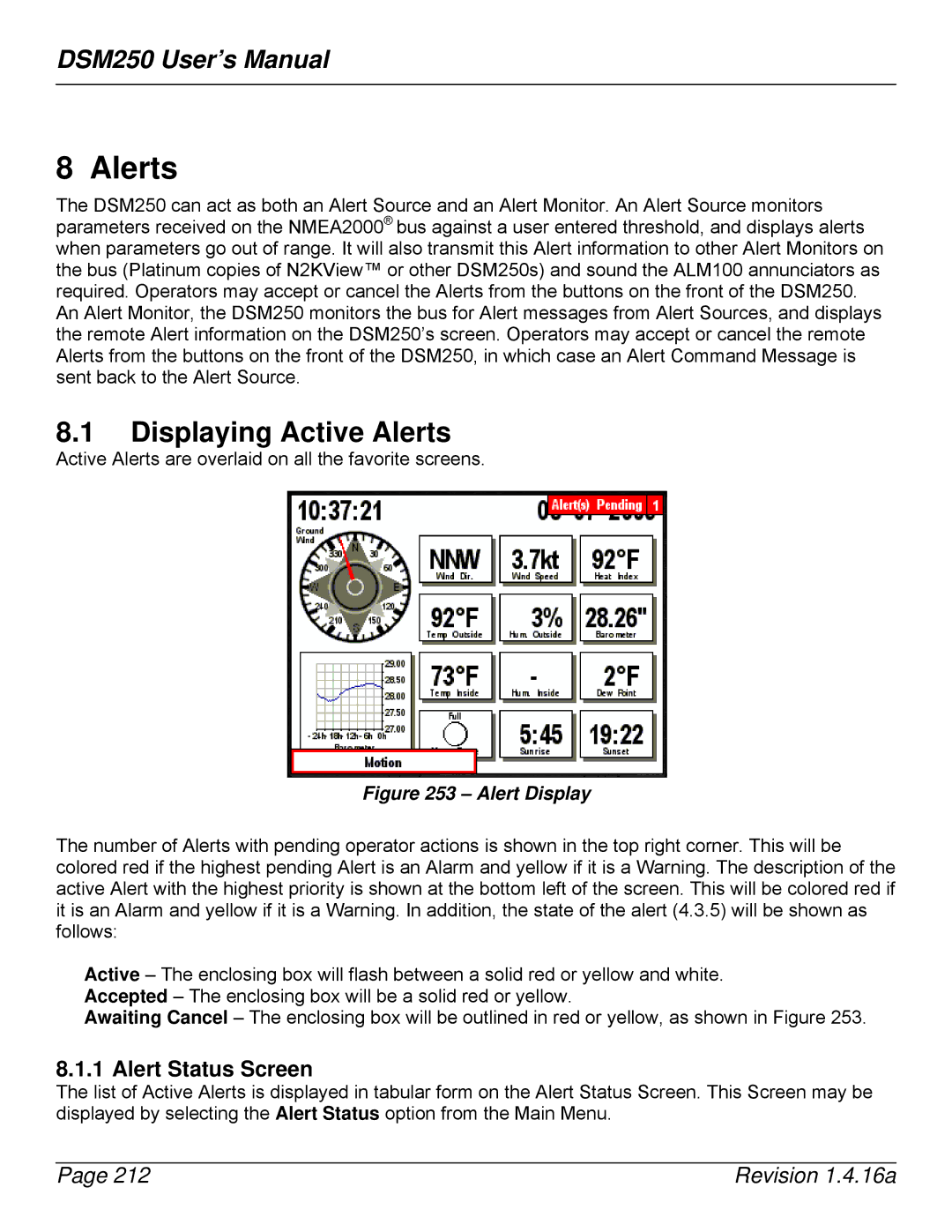
DSM250 User’s Manual
8 Alerts
The DSM250 can act as both an Alert Source and an Alert Monitor. An Alert Source monitors parameters received on the NMEA2000® bus against a user entered threshold, and displays alerts when parameters go out of range. It will also transmit this Alert information to other Alert Monitors on the bus (Platinum copies of N2KView™ or other DSM250s) and sound the ALM100 annunciators as required. Operators may accept or cancel the Alerts from the buttons on the front of the DSM250. An Alert Monitor, the DSM250 monitors the bus for Alert messages from Alert Sources, and displays the remote Alert information on the DSM250’s screen. Operators may accept or cancel the remote Alerts from the buttons on the front of the DSM250, in which case an Alert Command Message is sent back to the Alert Source.
8.1Displaying Active Alerts
Active Alerts are overlaid on all the favorite screens.
Figure 253 – Alert Display
The number of Alerts with pending operator actions is shown in the top right corner. This will be colored red if the highest pending Alert is an Alarm and yellow if it is a Warning. The description of the active Alert with the highest priority is shown at the bottom left of the screen. This will be colored red if it is an Alarm and yellow if it is a Warning. In addition, the state of the alert (4.3.5) will be shown as follows:
Active – The enclosing box will flash between a solid red or yellow and white. Accepted – The enclosing box will be a solid red or yellow.
Awaiting Cancel – The enclosing box will be outlined in red or yellow, as shown in Figure 253.
8.1.1 Alert Status Screen
The list of Active Alerts is displayed in tabular form on the Alert Status Screen. This Screen may be displayed by selecting the Alert Status option from the Main Menu.
Page 212 | Revision 1.4.16a |
